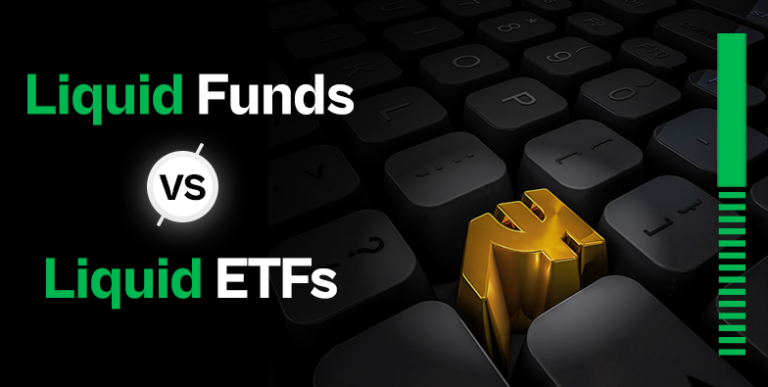Debt mutual funds received a net influx of ₹ 1.06 lakh crore in the Financial Year 2023. Liquid funds, a part of debt mutual funds, have Indian investors now recognise the several advantages of ETF investments and how they can be leveraged to grow one’s wealth over time. Understanding the difference between liquid funds and liquid ETFs is important for an investor who wishes to park their savings in a highly liquid debt mutual fund scheme.
How do liquid fund investments differ from liquid ETF investments? A point-by-point analysis:
Investors can distinguish between these two forms of investments by clearly understanding their features. Here are the key differences between liquid mutual funds and liquid ETFs:
- Investors require Demat accounts to invest in liquid ETFs. Investing in a liquid mutual fund, on the other hand, does not require the investor to have a Demat account.
- These are two distinct modes of investment. While liquid mutual funds are managed by experienced fund managers like any other debt mutual fund scheme, liquid ETFs trade on stock exchanges like stocks. Investors must assess the convenience of either modes of investment before choosing one over the other.
- They invest in different securities. Liquid mutual funds invest in debt securities that have an investment horizon spanning ninety-one days. Liquid ETFs, on the other hand, invest in overnight securities.
- The risks involved in both investment options differ. Liquid funds pose a lower risk to investors as compared to liquid ETFs as they invest in highly rated papers (AAA) with low duration. Liquid ETF investments are comparatively riskier.
- Liquid funds allow the redemption of fractional units. Liquid fund investors can invest any amount of money in these funds and also redeem the fractional units that they receive when their returns are reinvested. However, in the case of liquid ETFs investments, investors cannot redeem their fractional units.
- Liquid ETFs distribute returns as dividends. A key difference between liquid funds and liquid ETFs is that the latter necessarily distributes returns as dividends. The Income Tax Department taxes these returns as per the investor’s income slab. Liquid funds allow investors to choose a growth plan; allowing them to benefit from tax-free returns until the investor decides to redeem them. Liquid funds therefore offer higher returns when compared to liquid ETFs.
Should investors choose liquid ETFs or liquid mutual funds as an investment option?
Before deciding on a liquid Exchange-Traded Fund or a liquid mutual fund to invest one’s capital, one must carry out a detailed analysis of their risk-taking capacity, investment goals and investment horizon. It is important to note that liquid ETFs generally have higher expense ratios as compared to liquid mutual funds. Investors must assess the expense ratio of an ETF and analyse their risk-taking capacity before investing. Furthermore, if an investor wishes to re-invest their returns in a liquid ETF, they must know that liquid ETF schemes do not allow investors to redeem fractional units.
Investors must carefully analyse the various features of liquid funds and liquid ETFs before taking any investment decision.



